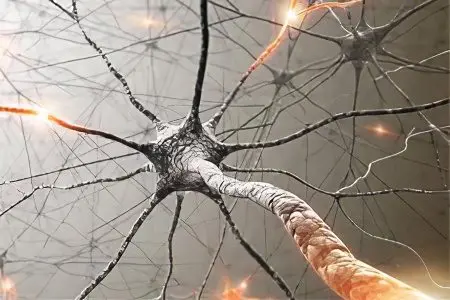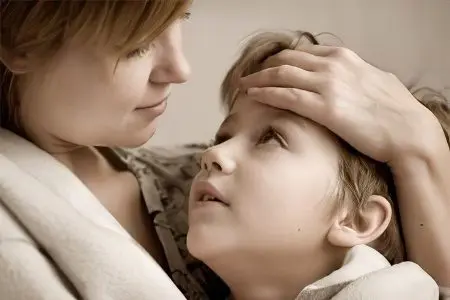Contents
Epilepsy is one of the most common brain disorders. The disease was first mentioned in the days of Ancient Babylon. About a century ago, D. H. Jackson attempted to define disease as disordered discharges of nervous tissue. Now, this disease is understood as a whole group of pathologies that manifest themselves in parkosismic seizures.
According to statistics, the proportion of febrile seizures that occur in childhood is up to 2%. In general, up to 1% of all children suffer from epilepsy.
Signs and symptoms of epilepsy in children
Epilepsy manifests differently in children than in adults. It is wrong to consider convulsive seizures as the only symptom.
In order to recognize the signs of the disease in time and begin adequate treatment, you should know all the manifestations of the disease:
Convulsive contractions. At the very beginning of the attack, the muscles begin to tighten, and breathing has interruptions with renewal and delays. Each convulsion can last from 10 to 20 seconds. Sometimes a child can empty their bladder involuntarily. When the attack passes, the baby falls asleep, as he is unable to fight fatigue and exhaustion.
Absences or so-called seizures without convulsive muscle contractions. They are most often affected by children. They may not be so pronounced and sometimes go unnoticed. You need to pay attention to the sudden twitching of the eyelids and the presence of a meaningless empty look. Sometimes the head leans back, while the eyes remain closed. The child does not blink. No matter how parents try to attract the attention of the baby, he will remain indifferent until the end of the attack. After the seizure is over, the child will not fall asleep. He will most likely return to the interrupted business, continue the abandoned game. Absences do not last long, no more than 20 seconds. If you do not know about this sign, then you can attribute such manifestations to the pampering and absent-mindedness of the baby.

Atonic seizure. In this case, the symptoms are more pronounced. The child completely loses consciousness, while there is a complete relaxation of all muscles. This should not be confused with fainting, especially since atonic seizures tend to recur regularly. This should definitely alert any parent, and after the first such incident, it is necessary to seek the advice of a pediatrician.
It is important to pay attention to how the child behaves immediately after waking up. The so-called children’s spasm can be expressed in pulling the arms to the chest, tilting the head forward. In this case, the torso moves forward, and the legs are extended in a line. The state of tension passes quickly, lasting a few seconds. Such attacks are observed in children 2-5 years old. Sometimes they can disappear without a trace, but sometimes they develop into a serious illness.
At night, the baby can be tormented by nightmares. He will wake up with his eyes wide open in horror and with loud screams.
Often children with epilepsy suffer from sleepwalking, they begin to walk in their sleep, and after waking up they do not remember anything.
Headache is another common symptom that accompanies childhood epilepsy. As a rule, it is accompanied by nausea and even vomiting.
It is important to pay attention to the speech characteristics of the child. With epilepsy, he speaks normally, but from time to time he has speech disorders. At the same time, the child continues to play, is fully conscious, but cannot pronounce words.
Causes of epilepsy in children

Among the causes that caused persistent disorders of brain activity and leading to the development of epilepsy in childhood, include:
Violations in the formation and development of the brain even at the stage of fetal development, that is, in the womb. Factors that can affect this can be: pregnant alcoholism, addiction to other bad habits: smoking and drug use. The risk of developing epilepsy increases if the pregnant woman has had colds or gestosis. Age of the mother: the older she is, the higher the risk of developing the disease in the child.
The nature of labor and the characteristics of the course of childbirth in general. In this case, the already formed brain is affected. Risk factors are long-term childbirth, a long stay of the child without water, asphyxia of the baby during passage through the birth canal, the umbilical cord wrapped around the neck, the imposition of special obstetric forceps.
Diseases of the nervous system of the child. Frequent diseases (of a viral and bacterial nature) can provoke the development of epilepsy. Especially if they are accompanied by high fever and convulsive conditions. Although it is worth mentioning that the prerequisites for the formation of epilepsy had already been laid down earlier, but remained unnoticed. Also, the postponed meningitis, encephalitis, arachnoiditis can become an impetus.
Concussion, blunt head trauma. These are all possible causes of epilepsy.
idiopathic causes. We should not forget about the genetic predisposition to the onset of the disease. Epilepsy can be inherited, or rather, not the disease itself, but a low level of dopamine, which is responsible for inhibiting chemical processes in the brain.
Micronutrient deficiencies and the risk of epilepsy. In 1973, the American Society for Neurological Sciences established a link between certain mineral deficiencies and the development of seizures. It is important to control the rate of zinc and magnesium in the body. The risk of seizures increases with a decrease in their concentration. Magnesium is quickly consumed under stress, elevated temperatures and loads. Even a short-term shortage negatively affects the contractility of muscles and blood vessels.
Any brain tumor can cause disease.
There is also a cryptogenic cause of the development of the disease. In this case, we are talking about unexplained factors that provoked epilepsy in a child.
Epilepsy in children under one year old
As for infants, in the context of the development of this disease, adults should be extremely careful. Of course, epilepsy can manifest itself at any age, but often the first signs are noticeable in children under the age of one. If you do not navigate the signs of the disease, then you can confuse them with manifestations of other pathologies. This is precisely the insidiousness of epilepsy in infants.
Often the trigger is an increase in body temperature during illness, a strong fright and other environmental factors.
Parents should definitely pay attention to:
Frequent screams, accompanied by shuddering. At the same time, the crumbs’ hands will tremble, the baby can swing them widely.
Sometimes the upper and lower limbs begin to tremble and twitch. It happens not synchronously and not rhythmically.
The child’s lively and mobile gaze becomes absent for a short time. At the same time, he stops moving, freezes and, as it were, “goes into himself.”
The muscles of the face on one half begin to tighten, and then tremble and contract. These contractions pass to the same half of the body, as well as to the arm and leg.
The child may suddenly turn his arm, head and eyes in a certain direction. They will remain motionless in this position for several seconds.
Even habitual movements and actions of the crumbs can be a symptom of epilepsy. It is worth being alert if during sucking or smacking the child’s skin color changes, they can become red, cyanotic or simply pale. This is especially noticeable on the skin of the face. These attacks are regular and often occur at the same time.
Types of epilepsy in children

If we turn to the classification of the disease, then there are more than 40 varieties of epilepsy. They differ in signs, the age of the child, the nature of the course of the pathology, the prognosis, etc.
Most often, four types of the disease are distinguished, each of which has its own distinctive features.
Idiopathic epilepsy in children
If we are talking about the idiopathic form, then it manifests itself in the following signs:
Convulsions are tonic, when the legs are straightened, certain muscles remain motionless.
Convulsions are clonic, when there is a contraction of various muscles.
The transition of one convulsions to others.
Often the child completely loses consciousness, during which there is a short-term cessation of breathing. Against this background, there is an involuntary emptying of the bladder and abundant salivation. Foam coming out of the mouth may turn red. This happens as a result of the fact that during the attack the tongue was bitten. When the seizure ends and the child regains consciousness, he remembers absolutely nothing.
Rolandic epilepsy in children
This type of epilepsy in children is a type of idiopathic form of the disease. According to statistics, most often it is found between the ages of 3 and up to 13 years. This type of disease got its name due to the fact that the focus of increased excitability is located in the Rolandic groove.
As symptoms, the following can be distinguished:
Cramps of limbs and facial muscles.
Immobility and complete numbness of the lower part of the face, as well as of the tongue.
Inability to pronounce words.
The duration of the attack is up to 3 minutes.
Finding the child conscious.
An increase in the amount of saliva secreted.
The child feels tingling in the mouth, in the throat, on the face.
Nighttime occurrence of an attack.
Seizures are unilateral.
Often this form of epilepsy disappears completely by the age of 16. At the beginning, seizures often disturb the child, but with age they become less and less.
Cryptogenic epilepsy in children
The most common form of the disease is up to 60% of the total number of diseases. They talk about the cryptogenic form in the case when it is not possible to find out the causes of the appearance and development of the pathology.
Symptoms can be different and combine signs of different forms of the disease. It can spread very quickly, capturing new areas of the brain. If the epilepsy is frontal, then it often manifests itself during the child’s nightly rest. Hallucinations may occur, consciousness is disturbed.
Absence epilepsy in children
This is the so-called minor form of the disease. Most often manifested by the following symptoms:
The child becomes motionless, as if frozen.
The head and limbs are turned to the same side. The gaze stops, becomes “lifeless”.
Muscles tighten sharply and also relax sharply.
The attack falls out of memory, the child returns to the abandoned business or conversation.
Sometimes there may be a distortion of taste.
There are pains in the abdomen and in the head, with the simultaneous appearance of nausea, an increase in heart rate, and a rise in temperature.
Diagnosis of epilepsy in children

The difficulty in defining the disease may lie in the fact that the symptoms often overlap with other diseases. It is especially difficult to understand that the baby suffers from this pathology, since parents do not pay attention to the slightest signs. Often they are attributed to the normal motor activity of the crumbs.
Methods used to diagnose epilepsy include:
Carrying out computed tomography.
MRI.
Electrocephalography.
If parents notice something unusual in the behavior of the child, then it is urgent to seek the advice of a neurologist. It is he who is able to recognize the signs of epilepsy, make an accurate diagnosis and prescribe treatment. And, of course, in no case should you ignore scheduled examinations by a doctor.
Treatment of epilepsy in children
The main goal of the treatment of the disease is not to get rid of the symptoms, but to eliminate the causes that caused it.
Therefore, in this case, an integrated approach is required, consisting of:
Medication treatments. Valproate, phenobarbital, or carbamazepine are used as anticonvulsants. They are necessary if the child has experienced more than two seizures. It is important to note that childhood epilepsy is successfully treated and up to 30% of babies are on the mend. In other cases, drugs help control the strength and frequency of seizures. Begin treatment with small doses, gradually increasing them. It is necessary to tune in to long-term therapy, which can take up to several years.
Sometimes surgery is required. In the event that the cause of the disease was a tumor or injury.
Food. If medications are not prescribed, then children need to adhere to a certain diet. It is based on a certain ratio of fats, carbohydrates and proteins.
It is important to remember that it is possible to permanently save a child from epileptic seizures, although the disease is classified as chronic. Nevertheless, a competent approach to treatment, the use of modern tools in conjunction with early diagnosis gives excellent results.










